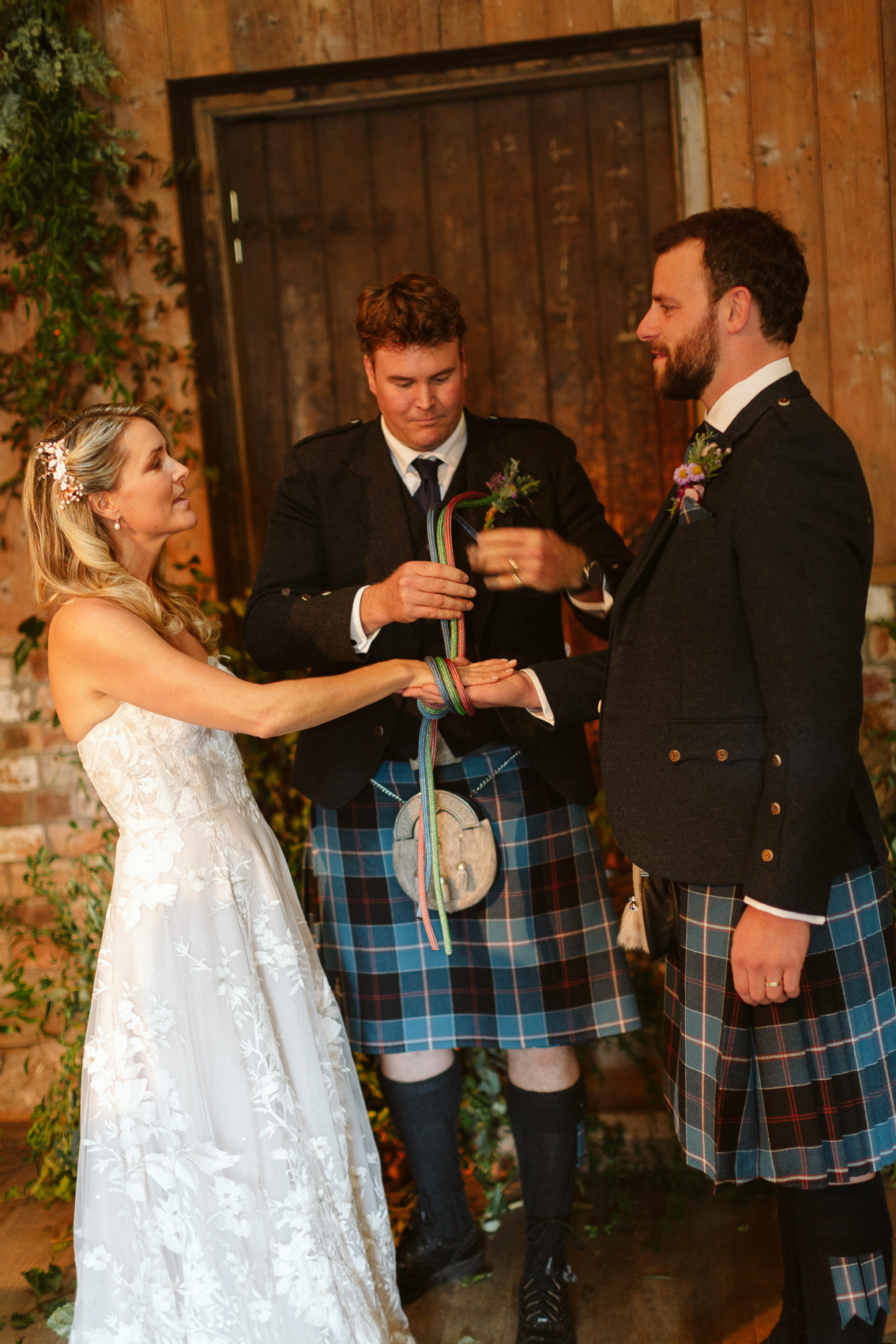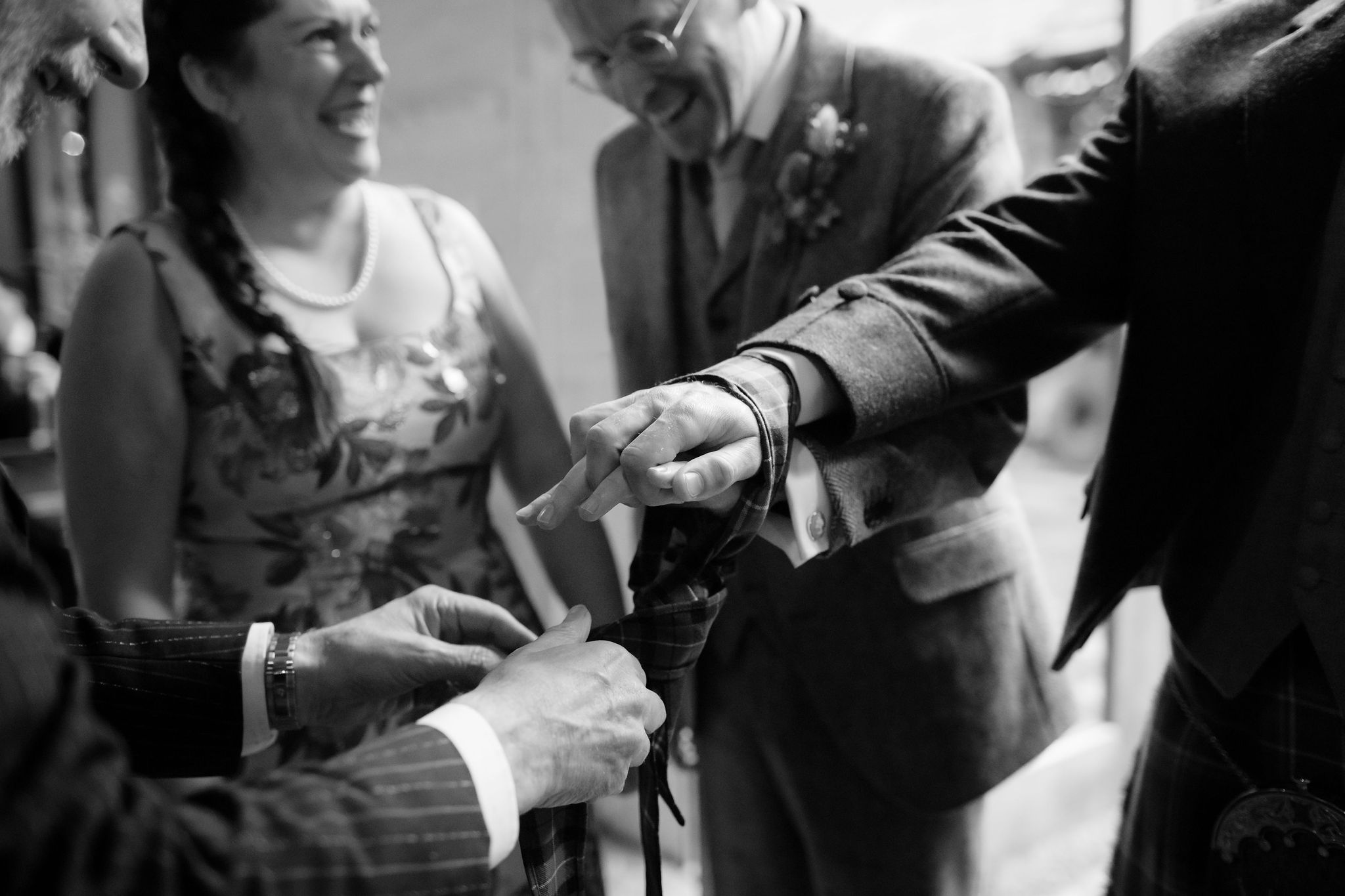Hand fasting is now very popular, and it’s often described as “an ancient Celtic ritual”. You may also be told that back in the mists of time, a hand fasting was a trial marriage that lasted for a year and a day and if the bride wasn’t pregnant by then, the groom could give her back to her family!


It’s a good story, but it’s not true. Like so many of Scotland’s myths, it sprang from the ever-inventive mind of Sir Walter Scott. The slightly less exciting truth is that hand fastings occur in many cultures around the world – as Ang and Qi know. In China, the tradition is known as ‘the red thread‘.

Before people like us could afford jewellery, they were an inexpensive way for a couple to mark the moment they became betrothed.
My friend and colleague Tom Morton lives in the Shetland Isles and on our new Substack, he’s just shared another ‘origin story’ that has a ring of truth about it. As he says, “The word ‘handfesta’ in Old Norse means ‘to strike a bargain by holding hands’ and holding hands seems to me a perfectly reasonable expression of affection, even for Scots.”

But to hell with history! Hand fasting is very much a part of modern marriage, it’s where the phrase, ‘tying the knot’ comes from, and there are lots of ways to do it.
The simplest is to loosely knot a single cord or ribbon around the joined wrists of both partners, but there are other more elegant and involved routines.

Danny & David’s wrists were bound together by their sisters, using the Hunter and Holyrood tartans.

Alternatively, the ribbons can be wound around the arms of both partners, who then pull the apart to form a knot, leaving their hands free, as Judi & Chris did.

The most popular material is silk ribbon which is light, looks pretty and is easily available, but you can be more inventive.

Luke is a Gooner, Alana’s a Jambo, and they used their scarves.

I love marrying fans of opposing football teams, but for me, the most symbolic handfasting I’ve ever done was on top of one of Scotland’s most iconic mountains, Buachaille Etive Mhor.

Jo and Rob are mountaineers. They didn’t just walk up the Buachaille, they climbed it, along with their bridesmaid, best man and photographer, and being mountaineers, they used rope! You can read more about their amazing mountain wedding here.

While we’re on the subject, there’s a wonderful collection of Scots poems called ‘Handfast’ with an introduction by one of Scotland’s leading poets, Liz Lochhead. She also wrote a poem for her own wedding called ‘Epithalamium’ which you can find here alongside some other crackers by (among others) the former poet laureate, Carol Ann Duffy.
On a practical note, if you want to do a handfasting, I think it makes sense to do it after you’ve signed the Marriage Schedule, so your hands are free… but as always, it’s your decision. Your ceremony, your words, and your symbolic gestures too!

0 Comments Leave a comment